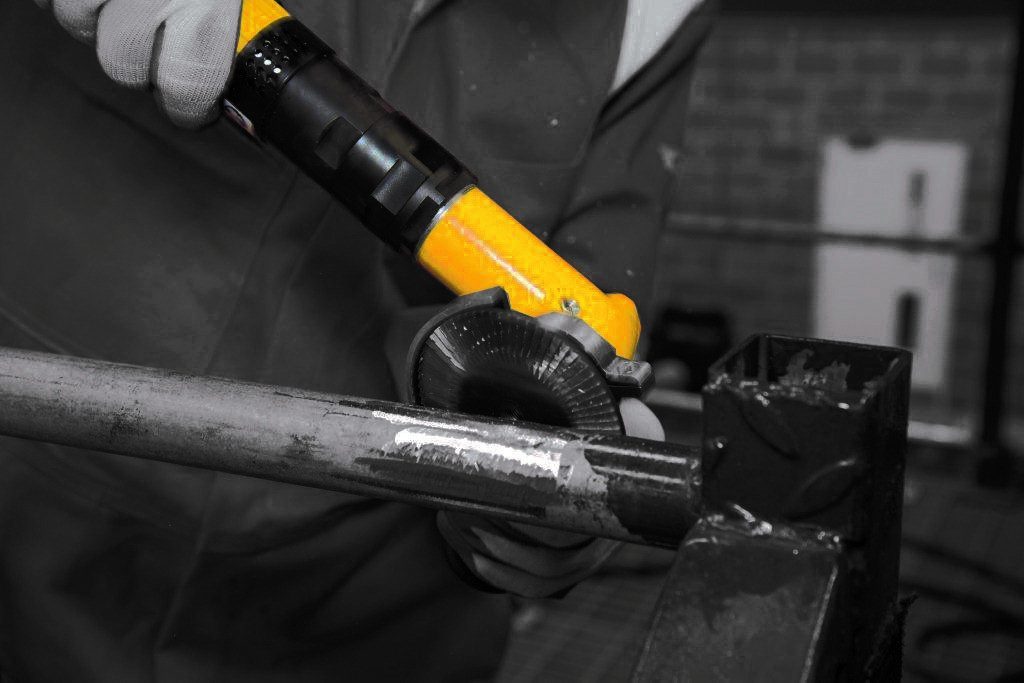
A new generation of power tools which eliminate risk and save time and money in hazardous environments has been launched by a pioneering Scottish company.
SAFEHOUSE, which introduced ‘habitats’ to allow hot work to be carried out safely in high risk areas, has now developed a range of approved tools for activities such as grinding, removing weld seams and coating removal. The tools, which provide “a no compromise alternative to conventional tools,” generate low heat so no hot work permit is required and they can eradicate the need for costly shutdowns.
They are manufactured in the UK and fully Det Norse Veritas (DNV) certified to meet the rigorous ATEX standards demanded when working in hazardous areas designated as zones one and two.
They produce much lower noise levels and the vibration levels are so low that the tools can be used for a complete work shift without breaching hand-arm vibration regulations. We have a range of tools to meet many applications, from weld seam removal to coating removal and grinding. The burrs and discs for attachment vary in size and shape and are made from tungsten carbide which means they don’t require to be regularly replaced.
Rick Clark, chief financial officer of Dundee-based Safehouse, said the power tools were “just one of the exciting ideas in terms of product development we have to build the SAFEHOUSE name around the world.
“They are not a replacement or alternative to a habitat, they are in addition to habitats. It’s not just about avoiding hot work because the design of these cold cutting tools is such that they can be used for longer without harm to the individual.
“We saw a need for it in the market and we designed and developed it as a result of our desire to satisfy our clients’ needs.”
Clark was invited to join the company in a 2014 in a management buy-in funded by First Reserve Momentum, a London-based private equity fund specialising in oil and gas investments, and Aberdeen-based Simmons Private Equity.
“We have committed investors who are happy to fund an expanding product line, in the right situation,” he said.
“We can build SAFEHOUSE by taking it exactly as it is and putting it into places it isn’t currently or selling to customers to which it doesn’t sell currently. We can extend the portfolio of services which SAFEHOUSE offers or buy something completely different, something complementary with which we have common customers or common suppliers and get benefits that way.
“We are looking at situations which would fit into each of those brackets at the moment – we are looking into something that would help extend the range of what SAFEHOUSE offers and give SAFEHOUSE traction in parts of the world where it is not yet and we are looking at a business that would comfortably sit alongside SAFEHOUSE but gives a lot of benefit to SAFEHOUSE from common customers.”
SAFEHOUSE habitats have achieved more than 10 million man hours without a serious incident and have helped customers save an estimated $500 million. The company has six international offices and to date has operated in 35 countries.
Although the habitats were initially developed to allow hot work to take place in live environments they now have an extended range of uses. They create a positive pressurised environment which ensures that no dangerous hydrocarbons and toxic gases penetrate the area where work is being carried out. SAFEHOUSE is currently working on a major contract in Kazakhstan where, for the first time, negative pressure habitats have been created to keep dangerous hydrocarbons and toxic gases contained while work is carried on outside areas.
Interested in Power Tools? Contact uk@safehousegroup.com.

